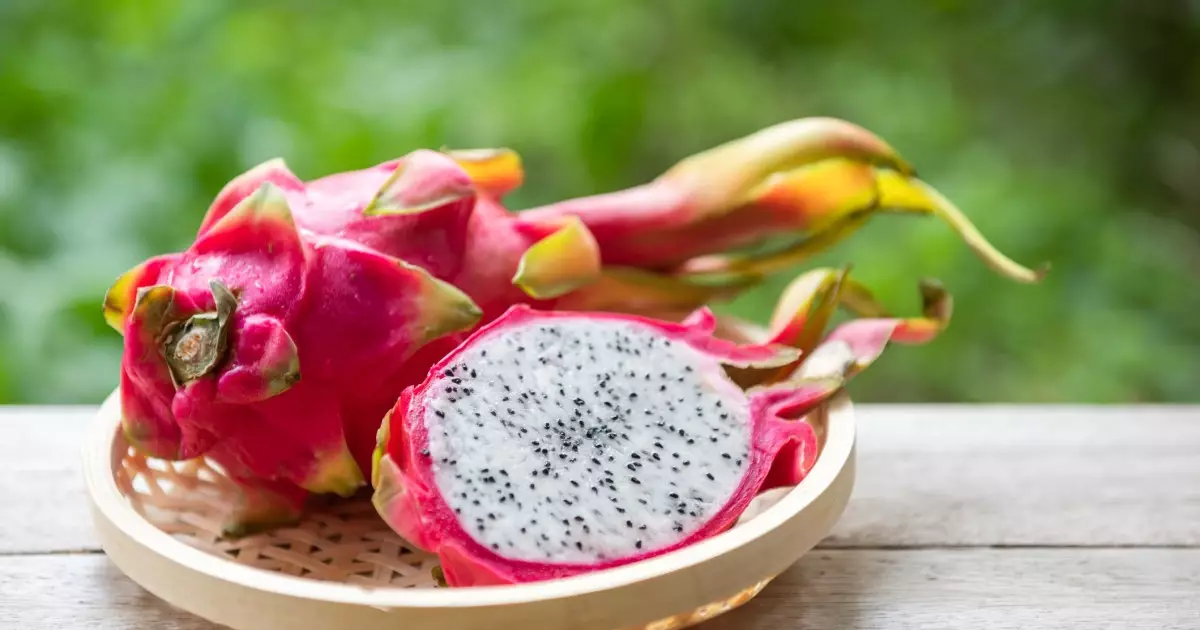Dragon fruit, with its vibrant colors and unique appearance, stands out as one of the most intriguing fruits in the botanical world. Its deep pink skin, adorned with green-tipped scales, resembles an otherworldly treasure, leading many to wonder whether such an exotic delicacy is also suitable for our four-legged companions. The picturesque exterior of the dragon fruit may raise eyebrows, but let’s take a closer look to demystify its status for dog consumption.
The short and delightful answer is that yes, dragon fruit is indeed safe for dogs to enjoy. However, it requires a bit of preparation to ensure it is ready for your furry friend. Contrary to many other fruits that beg scrutiny, dragon fruit presents a straightforward interaction: simply peel away the leathery skin and reveal the soft, sweet flesh inside. This makes it an easy choice for pet owners looking to introduce a new snack into their dog’s diet. Still, as with any new food, it’s always wise to consult a veterinarian prior to diving in.
The Nutritional Treasure Trove
Unlike many fruits that provide essential nutrients for humans, dragon fruit offers a mixed bag for our canine counterparts. Humans benefit greatly from dragon fruit’s rich vitamin C content, yet dogs naturally synthesize this vitamin, making it unnecessary for their health. However, don’t be disheartened, as dragon fruit still offers some valuable benefits for dogs. It is a source of dietary fiber, which aids in digestion, and is also rich in calcium and iron. Moreover, the fruit is packed with Omega-3 fatty acids, which are instrumental in maintaining a healthy, shiny coat.
Another bonus is the relatively low-calorie and low-fat profile of dragon fruit. In an era where pet obesity is a growing concern, incorporating low-calorie treats like this can be a highly beneficial addition to your dog’s diet. Dogs typically enjoy the sweet, mushy texture that dragon fruit offers, making it an appealing and tasty snack option that you can share.
Preparation: Keeping Your Furry Friends Safe
When it comes to feeding your dog dragon fruit, it’s not just about slicing and serving. The most critical step involves the careful removal of the tough skin, which is not harmful but can be tough for dogs to digest. The interior flesh is where the magic lies, and the small seeds that dot the fruit can be safely consumed without concern. Unlike other exotic fruits that harbor toxic seeds, dragon fruit’s seeds are soft and entirely non-toxic, ensuring that your pup can enjoy the fruit without digestive worries.
It’s also worth noting that dragon fruit comes in a variety of species—pink, yellow, and white being the most commonplace. Thankfully, all these varieties are safe for dogs, so no need to worry if you encounter different colors while shopping. Whatever the hue, the focus should always be on moderation when introducing this sweet treat to your dog’s diet.
Moderation is Key
Even with the numerous benefits dragon fruit offers, moderation should remain the guiding principle in any dog’s diet. While the fruit is a safe and healthy choice, too much of a good thing can lead to digestive upsets, including loose stools or an upset stomach. The sugar content, though naturally occurring, could still be overwhelming for some sensitive bellies. It’s essential to introduce dragon fruit gradually and monitor how your dog reacts, providing just a small amount at first.
For pet owners, embracing the delightful flavors of dragon fruit can add an exciting twist to your dog’s treat repertoire while still prioritizing their well-being. For those keen to treat their pups to something tasty and exotic, dragon fruit stands out as a colorful addition to any dog-friendly can diet, proving that even the most astonishing fruits can play a nourishing role in a dog’s life. As always, when in doubt, your veterinarian can offer tailored guidance to ensure a safe exploration of this exotic fruit for your canine companion.

